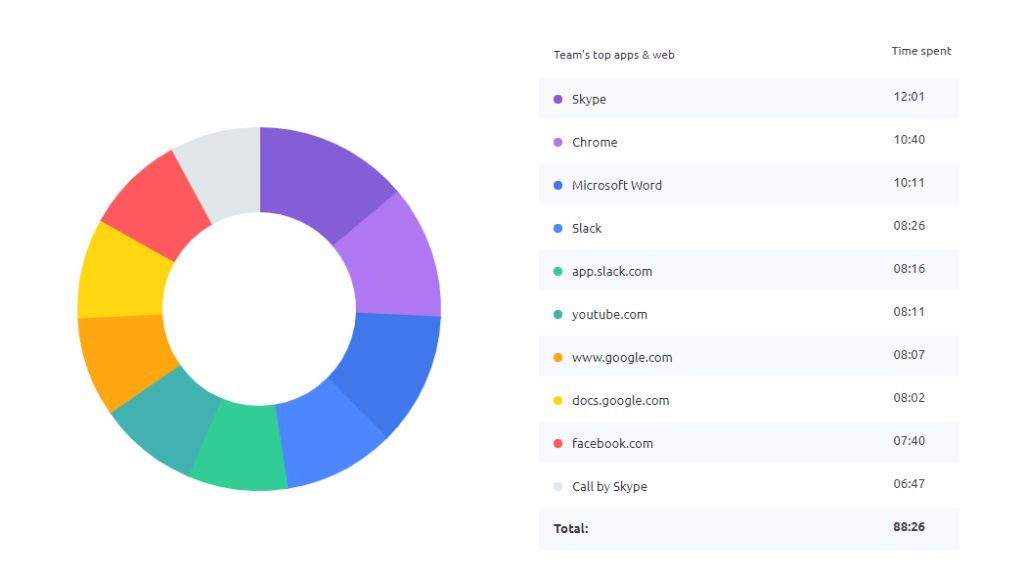
When Fractl surveyed over 2,000 individuals, they found that a flexible work schedule is one of the factors that help people choose jobs. This work benefit comes after better medical insurance on the wish lists of job seekers.
Now, when we talk about the alternating work schedules, what naturally comes to mind is remote work or telecommuting.
Millions shifted to working from home in 2020 due to the pandemic. While many companies are coming back to the office, a large number of employees still prefer flexible work conditions.
According to a recent Growmotely survey, 74% of professionals expect remote work to be standard. Indeed, if companies do not adopt a permanent work-from-home setup, they should at least consider alternate work schedules.

What Is an Alternative Work Schedule?
Most employees have the standard 9 to 5 work schedule. However, if we talk about the “alternatives” to the common practice, we’re looking at schedules that are not limited to a fixed period. Some examples include a 4-day workweek and being on-call. In most cases, these schedules are outside regular business hours. Because of that, employees usually have their daytime hours free. They can use that time for personal activities like going to school, caregiving, or working part-time on another job.
Is an Alternative Work Schedule Beneficial?
If you need flexible work hours, you will benefit from an alternative work schedule. It is particularly convenient for working students, parents with young children, and those who need supplemental income jobs.
Keep in mind that there are various types of alternative work schedules. So, when applying for a job, make sure you understand the work setup it offers. This way, you’ll know exactly what the company is looking for and what it’s willing to offer you.
Here are the different types of alternative work schedules:
A Common Window Schedule
Even if a company promotes a flexible work setup, it still needs its employees to work at the same time at some point throughout the day. They will need a window period wherein they can ensure sufficient customer service or attend meetings. Even amidst flexible work, the sense of office camaraderie is still essential.
The U.S. Bureau of Labor Statistics even allows their employees to work on a flexible schedule as long as they meet the window period requirements. Their staff members can report for work as early as 6 AM and they can clock out as late as 8 PM. However, from Tuesday through Thursday, they need to ensure that they are logged in from 10 AM to 2 PM. The U.S. Bureau of Labor Statistics has other guidelines for flexible scheduling. However, it reiterates the importance of having a common meeting time for employees.
A Four-Day Workweek

When Perpetual Guardian tested a four-day workweek, they were surprised with the results. Many expected that productivity in the workplace would suffer, but this was not the case. Instead, the employees’ output was consistent, and they even improved their work-life balance by 24%. Although they had one less workday, they still got the same paychecks. Because of the experiment’s success, the company began amending its policy to make the setup permanent.
What’s great about the four-day workweek is that it eliminates time wasters at the workplace. With the promise of an extra day off, employees are eager to rise to the challenge. With this work schedule, they can enjoy an interesting avenue for flexibility. In most cases, workers are not required to have the same four days at work. They are free to choose Monday or Friday as their extra day off.
Job Sharing
Job sharing is another example of an alternative work schedule. It is when two people fulfill a standard employee shift by working on part-time schedules. Two individuals will work half of the full-time shift so that they can enjoy some flexibility in their hours. Let’s say a regular shift is 9 AM to 5 PM. The first employee will work from 9 AM to 1 PM, while the second staff member will work from 1 PM to 5 PM.
Compressed Workdays
Some companies cannot afford to lose a workday within a week. In this case, the ideal option would be compressing the schedule. In this model, employees will only have to work for five hours a day. They get to work at the same time, but instead of taking a lunch break, they stay in the office for another hour. Once they’ve completed the five hours, they can call it a day.
Also known as the 8 to 1 schedule, the compressed workday offers unique benefits. For one, employees get their afternoons off. Even so, they still get to enjoy the advantages of having an office life. In many ways, it can be considered as the ‘work hard, play hard’ schedule.
A Maxiflex Work Schedule
Maxiflex is another type of alternative work schedule that requires employees to log 80 hours for a biweekly pay period. They are free to vary their billable time on any given workday as long as they meet the core hours. With this work schedule, staff members can have more control over their lives. All the while, employers will still find this as an effective business strategy.
A maxiflex schedule is quite appealing to job seekers, making it easier to recruit top talent. Moreover, there’s higher engagement among employees when they feel they have control over their time. When people feel satisfied in the workplace, they get a boost in their productivity.
DIY Paid Time Off (PTO)
There is a good reason why freeform PTO policies are gaining traction in the corporate world. This type of work may not be as awe-inspiring as other alternative work schedules. However, it is still quite appealing to employees. In some cases, companies allow their staff members to take longer vacations. In other organizations, employees can take a mental health day when they need to. Meanwhile, some workers can report to the office during holidays and take that supposed day off any time they want.
You will be surprised to hear that there are companies that commit to unlimited PTO. However, many say that this alternative work schedule is too good to be true. When The Muse interviewed employees with access to this benefit, it was revealed that unlimited PTO usually came with hidden conditions. Many workers realized that companies used the term “unlimited” deceivingly. Moreover, they ended up with less PTO than before.
Seasonal Work
Another alternative work schedule involves requiring employees to report for work during a particular time or season of the year. In most cases, companies that use this system have full-time workers. However, during the busiest months, they need additional manpower. Meanwhile, other businesses operate for a limited amount of time every year. In this case, they will only hire seasonal employees.
Online flower shops are an example of companies that use this alternative work schedule. These businesses expect more phone-in or online orders during February and December. So, they will hire more employees during these months. On the other hand, if they have part-time staff members year-round, they may ask these people to temporarily work full-time.
Remote Work
Remote work can also be considered as an alternative work schedule. Employees can work away from their company’s place of business. Some organizations even allow working from another state or country with a different time zone. In other cases, managers may let employees work from home, then ask them to come to the office at least once or twice a week. This setup is commonly referred to as telecommuting.
Use Traqq to Accurately Track Alternative Work Hours

As you can see, monitoring employees with alternative work schedules can be a complex task. However, there is an easy way to keep track of their billable time. You can let them install and use a trusted tool like Traqq. No matter what an employee’s shift schedule may be, all they need to do is click Start on the time tracker. The app will automatically record their work hours.
At the end of the week, you can go to the dashboard to see the number of hours your employee logged. Within a few clicks, you can generate a neat timesheet that is exportable as a PDF or CSV file. This way, invoice and payroll processing will be easier for you. Aside from that, Traqq also analyzes productivity markers and shows you individual and team performance. Indeed, it is the ultimate time management and productivity tool for organizations with alternative work schedules.

